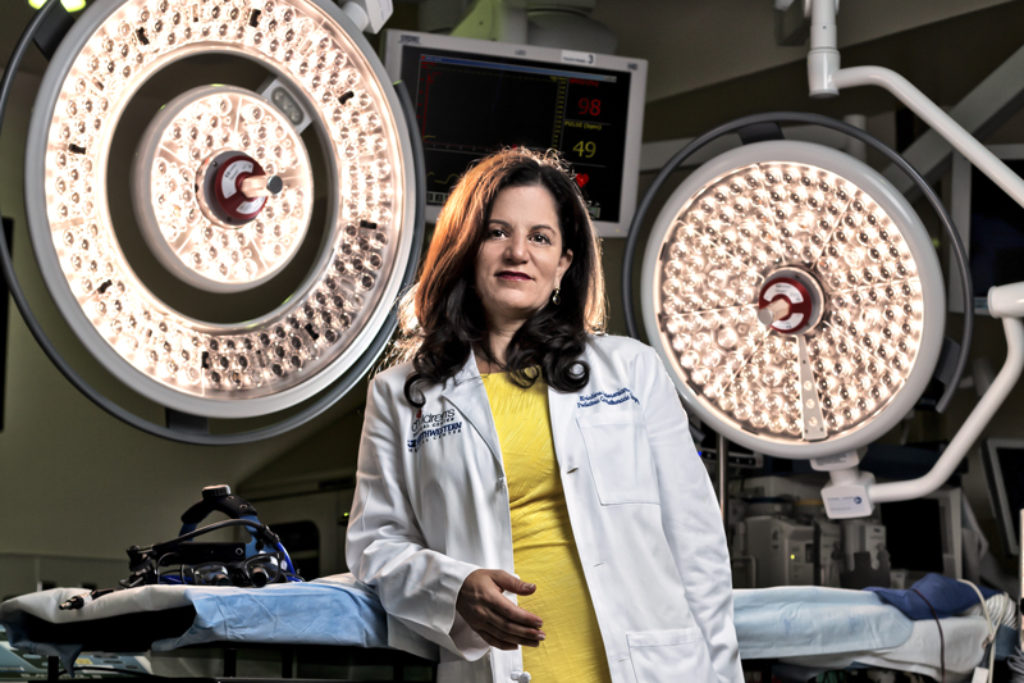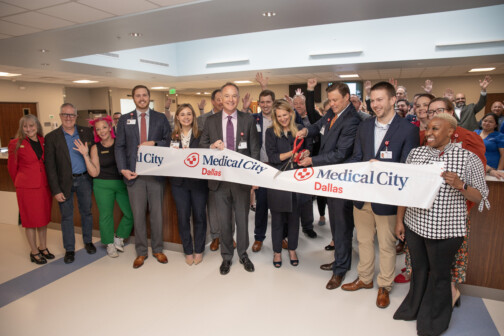
A light rain falls outside of Children’s Medical Center at 7:30 in the morning as Dr. Kris Guleserian makes her rounds. All down the L-shaped corridor can be heard the even tone of heart monitors and the hiss and click of respirators. Guleserian absorbs the night shift’s report, issues instructions, and heads for her office on the third floor, the sharp report of her heels receding down the long hallways.
She sheds her flower-print Roberto Cavalli dress and Christian Louboutin heels, and pulls on blue cotton scrubs and a pair of Dansko clogs. The tight curls of her dark, shoulder-length hair bunch into a disposable cap. She threads through a locker room, a series of heavy wooden doors, and enters the operating-room suite. At a sink outside of the operating room, she scrubs her hands and forearms with chlorhexidine soap, then steps into the OR.
At the center of the room is a 6-by-6-inch square of flesh, the rising and falling chest of a 9-month-old girl slathered with ochre iodine. The rest of the child is hidden beneath tented folds of sterile blue sheets. Guleserian’s assistant helps her into a surgical gown and a pair of Biogel gloves pulled high over the sleeves. The 5-foot-nothing woman—the only female congenital cardiothoracic surgeon UT Southwestern has ever had, and one of only 11 board-certified in the entire country—mounts a stool next to the table. With a black marker, she traces a straight line down the lower half of the little girl’s sternum.
Today, Guleserian will open her chest and repair a rare congenital defect known as Tetralogy of Fallot. In the womb, when the child’s heart began to fold and divide from a simple tube into four pumping chambers, something went wrong. The misaligned muscles failed to fully connect. A hole—a septal defect—formed in the wall separating the main chambers, and the errant tissue obstructed the pulmonary artery, which carries depleted blood to the lungs for oxygenation. As the heart struggled to compensate for these malformations, the right chamber thickened with the effort. When the blood leaves her heart, it should be a rich, healthy red. Instead, her exhausted blue blood mixes with and diminishes the vital stuff. She’s usually tired, weak, her lips and extremities often an oxygen-starved pale blue. Without this surgery, it is unlikely she will survive for long.
Guleserian can fix her.
In a voice betraying a hint of her native Boston, she asks for the scalpel. The blade slips over and through the delicate skin, fine beads of blood forming on either side of a 4.5-centimeter incision. Then, the electrocautery knife cuts and burns through layers of subcutaneous fat and fibrous fascia, on down to the sternal bone. Thin curls of smoke waft toward the bright lights. Accompanied by the brief whine of a saw, Guleserian spreads the girl’s chest cavity. Her heart, not much bigger than a walnut and the color of pork tenderloin, clenches and swells, exposed to the world now. Guleserian’s large, expressive green eyes peer through magnifying loupes into the child’s chest. She knows this heart—it might as well be her brother’s. In a few minutes, it will cease beating by design. She must work quickly.
This piece originally appeared in the October issue of D Magazine. Head to this link, and scroll down to the second section, to continue it.
Author






